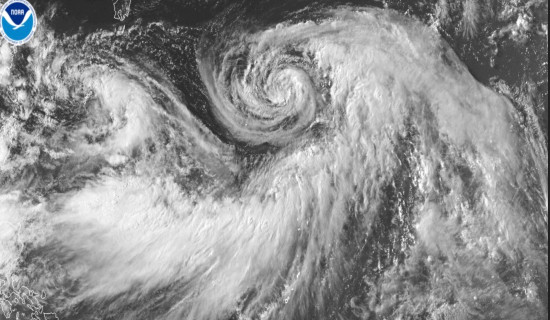- Wednesday, 30 July 2025
Stargazing Highlights This July
The night skies of this hot summer month invite skywatchers to feast on the sights of planets, stars, constellations, and other heavenly wonders. The majestic, ruddy planet Mars could be manifested well in the western sky after sundown for a few hours. It would be merrily mingling with the shiny stars that sketch the legendary zodiacal constellation Leo (lion). The resplendent star Regulus (Magha) would be relaxing and rejoicing to the west from its vicinity. Renegade star Regulus is a queer quadruple star arrangement composed of four stars that are organised into two pairs.
It is approximately 79 light years away. The mighty planet Jupiter and its Jovian moons could joyfully bejewel the eastern sky from around mid-month briefly before sun-up. It would be jogging through the southern section of the constellation Gemini (twins). Secretive stars Metsuba and Wasat are shimmering strangely near Jupiter. Attractive star Alhena twinkles below Jupiter. The stars Castor (Kasturi) and Pollux (Punarbasu) are blazing above Jupiter. The elusive planet Mercury could be gazed at above Jupiter.
Castor is a bizarre sextuple-star bunch that is purely 52 light-years away. Pollux is an orange-hued giant star simply 34 light-years away. Alhena is a blue-white-hued star solely 105 light-years from us. Wasat is a long-period binary star, basically 59 light-years away. Mebsuta is a double star that includes a peculiar primary yellow supergiant. It is scantily nine hundred light-years away. The planet Mercury reaches its greatest eastern elongation from the Sun on 04 July. It will stand highest above the horizon in the evening western sky. Otherwise, it would be loitering low and hugging the western sky just after sunset at the start of the month. It would then stumble from a glance, as it would be fleeting through the compact constellation Cancer (crab).
The amazing rosy-hued giant star Asellus Australis (Pushyae), at an odd 131 light-years distance, would be coruscating to the east of the planet Mercury, which sits strikingly to the southwest of the baffling fuzzy open Beehive Cluster (M44) or eponymously designated Praesape. This cluster is concurrently 590 light-years away. The remarkable ringed planet Saturn and the far-flung beautiful blue planet Neptune are lustrously located southwest below the conscious circlet asterism connected to the confounding constellation Pisces (fishes). They would alluringly appear in the eastern sky late at night and ascend the southern sky. They would fade out of view on the southern horizon as the day would break breathtakingly.
The distant, pale greenish planet Uranus and the romantic, effulgent planet Venus could be viewed tersely in the eastern sky before sunrise. It would be gleefully glimpsed with the scintillating stars that dwell on the western side of the charming constellation Taurus (bull). Arcane red giant star Aldebaran (Rohini) is sparkling below Uranus and Venus. It is quaintly 67 light-years away.
Commanding Crab Nebula (M1) would beacon bewitchingly from north of Venus. M1 is a supernova remnant. It resembled a crab optically with arms. It was ascertained with a flaming supernova appraised in 1054 BCE by Native American, Japanese, and Arabic stargazers. Chinese astronomers registered this supernova as a historical supernova explosion. It could be assumedly 6500 light-years away. Curiously comforting constellations Cetus (sea monster) and the Great Square of congenial constellation Hercules (strong mythical person) are startlingly stretching below and above Pisces.
The fascinatingly tranquil full moon transpires on 10 July. It is popularly tagged as the buck full moon because the male buck deer would generally begin to grow their antlers at this time of year. The new moon befalls on 24 July. The moderate Delta Aquarid meteor shower would dramatically display up to 20 meteors per hour at its peak. The shower runs annually from 12 July to 23 August.
Its maximum this year betides on the night of 28 July and the morning of 29 July. The crescent moon will set early in the evening, leaving tenebrous skies for an exceptionally excellent show from pitchy precincts after midnight. Meteors will exude from the radiant point neighbouring the salient sheen star Skat (alias Delta Aquarii) that inhabits the awesome constellation Aquarius (water bearer). It rises in mid-evening, climbs toweringly around 02 AM local time, and sinks by dawn. The Delta Aquariid meteor shower parent comet probably originates from the 96P/Machholz Complex (a collection of eight meteor showers with common ancestry, entailing the Delta Aquariids, plus two comet groups (Marsden and Kracht) and one asteroid (2003 EH1)).
They are all related to the comet 96P/Machholz, with an orbital period of circa 5.3 years. It was identified in May 1986 from Loma Prieta Mountain in California. The shooting stars from the comet's debris are relatively slow but noticeable. Their trails last longer. Fulgent fireballs light up the sky delightfully. The Vera C. Rubin Observatory has presented its initial images. They will revolutionise our understanding of the universe. Humanity's extraordinary eye may forecast the fate and future of our existence in space. US National Science Foundation (NSF) and Department of Energy (DOE) experts had stared deep into the cosmos, using its powerful camera to compile in near-ultraviolet, optical, and near-infrared wavelengths. The outcomes are unprecedented and exciting. Rubin Observatory will capture more information than those from all optical telescopes throughout our combined history. Researchers will explore copious cosmic conundrums linked to the dark matter and unseen energy that presumably permeate nature. Rubin's maiden responsibility is a 10-year survey of the southern sky dubbed the Legacy Survey of Space and Time (LSST). It will map the sky meticulously, recording each section precisely 800 times utilising the telescope's 3200-megapixel camera (the world's largest) and tabulate an unprecedented 10-year time-lapse of the universe. They will capture asteroids, comets, supernovae, and pulsars, cataloguing exploding stars billions of light-years away. The Rubin Observatory divulged the birthplace of baby stars accurately, along with a detailed, massive picture of the Milky Way, mind-boggling Trifid and Lagoon pink-coloured emission nebulae in the constellation Sagittarius (archer), and two dense molecular clouds bubbling with a hidden nursery of star formation. In a meagre 7.2 hours, the telescope accumulated 678 individual photos for the mosaic at under five gigapixels.
Rubin showcased its prowess to zoom in on a petit patch of sky, revealing a jaw-dropping sheer ten million galaxies in a tightly focused field of vision around the famed Virgo cluster. In ten hours, it could peer at a whopping 2104 orbiting space rocks imperceptibly before. Avidly, 20 thousand asteroids have been ferreted out yearly by all ground-based telescopes. None of the asteroids disclosed so far by Rubin would pose any potential threat to Earth. The ultra-modern Rubin observatory will become a puissant tool vital for recognising hazardous stones. It is the first of its kind in its mirror design, camera size, sensitivity, and telescope speed, with computing infrastructure uniquely sophisticated, falling into a novel category. Rubin data will help us comprehend our cosmos and its chronicles of evolution better, delve into the essential enigmas of obscured energy, and reveal answers to quirky questions and puzzles. Named gloriously after the astronomer Vera Rubin, it is a joint venture of the US DOE and the NSF. Built and perched atop the hills in northern Chile in the Andes ranges at the Atacama Desert's edge.
The venue is elevated and dry and bestows clear skies for embracing the sky. The budget outlay for this next-generation facility is estimated to be USD 680 million. Vera Rubin, the pioneering American astronomer, provided convincing evidence of dark matter or that invisible substance concocting up over 80 per cent of all around us. The iconic James Webb Space Telescope (JWST) has assured its foremost exoplanet, TWA7b, rushing around the ardent star occupying the crimpy and curly southern constellation Hydrus (water snake). It is merely 100 light-years away.
This planet is cool and crispy, similar to Saturn. Webb's infrared capability had augmented the chance of encountering earth-like worlds. Webb will pinpoint habitable planets by digging out Mars-like entities and pondering how they evolved. Advanced telescopes will support the search for life beyond our solar system. Instruments like the Extremely Large Telescope in Chile, launched in 2028, will dive into the depths of Delphic space to learn more facts and gain more knowledge.
(Dr. Shah is an academician at NAST and patron of NASO.)

















